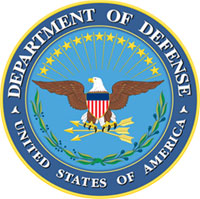By Craig Whitlock in the Washington Post
 Uncle Sam wants to give free, no-strings-attached money to about 145,000 troops who were involuntarily kept on duty after the Sept. 11, 2001, attacks, but is having trouble persuading them that it’s not a gimmick.
Uncle Sam wants to give free, no-strings-attached money to about 145,000 troops who were involuntarily kept on duty after the Sept. 11, 2001, attacks, but is having trouble persuading them that it’s not a gimmick.
Last October, Congress approved retroactive bonus pay for military personnel who were forced to remain on duty beyond their original discharge date, a controversial policy known as “stop-loss.” Lawmakers approved back pay of $500 for each month of involuntary service; the average lump-sum due is between $3,500 and $3,800.
To get the cash, an application must be submitted by Oct. 21; only about a third of those eligible have handed in paperwork. With just six weeks remaining before the deadline, the Department of Defense is scrambling to track down about 90,000 veterans, as well as some active-duty troops, to ask them to apply for their back pay.
The military has mailed letters to those who are eligible and mounted an extensive publicity campaign, but the message isn’t sinking in. More than 80 percent of those entitled to the bonuses are Army veterans.
Many veterans have ignored the letters, forgotten about filing the paperwork or concluded that the deal is too good to be true, said Lerners “Bear” Hebert, acting director of officer and enlisted personnel management at the Pentagon. “It is unusual, and because it’s unusual maybe that’s why some people are questioning whether this is legitimate,” he said.
Between September 2001 and September 2009, the military used its “stop-loss” authority to force 186,000 troops to remain on active duty beyond their scheduled discharge dates.
“Stop-loss” is used as an emergency measure to keep deployed units in the field or retain specialists whose skills cannot be easily replaced. The military first invoked it in 1990 in preparation for the Persian Gulf War, but expanded it significantly during the wars in Iraq and Afghanistan.
Since the spring of 2009, troops serving under “stop-loss” orders have been receiving an extra $500 a month in their paychecks. Congress later ordered the military to dole out back pay to those affected by the policy dating to 2001. There are some exceptions. Soldiers who accepted re-enlistment bonuses, for instance, are ineligible.
As of the end of last month, the military had processed about 55,000 applications and approved $210 million in back pay, according to Eileen Lainez, a Department of Defense spokeswoman. Congress allocated $534 million for the program, so there’s $324 million left unclaimed.
Defense officials said they are running social media campaigns, reaching out to veterans groups, tracking down relatives of those whose whereabouts are unknown, but that it’s been hard to persuade people to submit an application, which can be done online at www.defense.gov/stoploss. Officials said the application is required by law and they can’t simply mail out unsolicited checks.
“We knew it was going to be a challenge,” Hebert said. “As a military culture, we generally don’t pay people for services rendered; we pay them when they serve.”
ATTENTION READERS
We See The World From All Sides and Want YOU To Be Fully InformedIn fact, intentional disinformation is a disgraceful scourge in media today. So to assuage any possible errant incorrect information posted herein, we strongly encourage you to seek corroboration from other non-VT sources before forming an educated opinion.
About VT - Policies & Disclosures - Comment Policy



